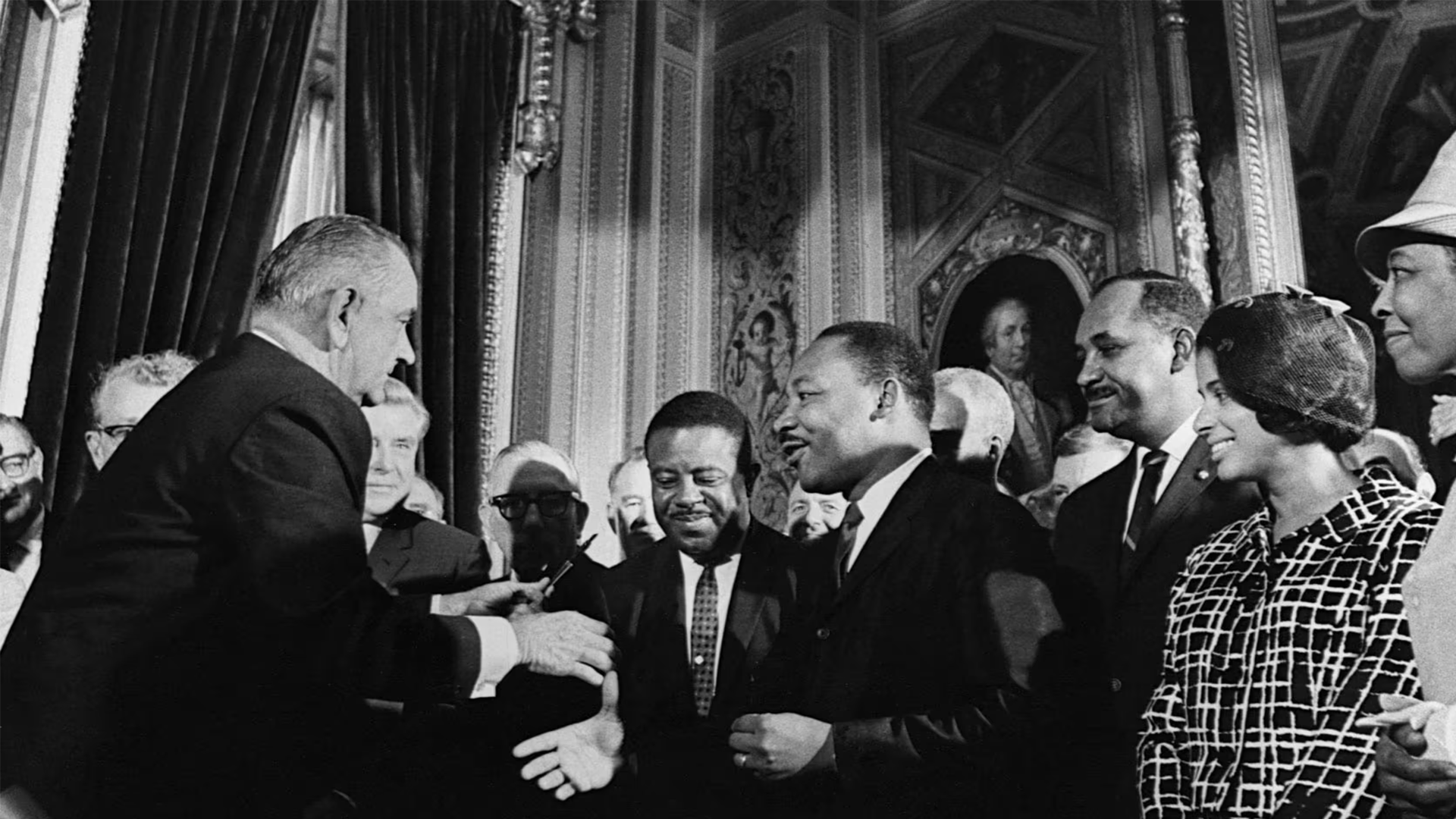The Voting Rights Act of 1965: Enforcing the 15th Amendment

The Dive
When the U.S. Constitution was amended in 1870 to include the 15th Amendment, it promised that no citizen could be denied the right to vote based on race. But for nearly a century, many states—especially in the South—found ways to undermine this promise through literacy tests, poll taxes, and intimidation. This gap between the law on paper and reality on the ground became a central injustice that the Civil Rights Movement sought to expose and correct.
By the early 1960s, voter suppression was not subtle—it was systemic. In some counties, fewer than 10% of Black citizens were registered to vote, despite making up a large portion of the population. Laws were written to look race-neutral, but in practice, they targeted Black voters. This was a violation not just of rights, but of the core democratic principle that government should reflect the will of all its people.
The Selma to Montgomery marches in 1965, especially 'Bloody Sunday,' forced the nation to confront this injustice. When peaceful protesters were brutally attacked by state troopers, images of the violence spread across the country and shocked the conscience of the public. It became impossible to ignore that legal equality meant nothing without real access to the ballot box.
President Lyndon B. Johnson seized this moment, urging Congress to pass strong federal protections for voting rights. His speech to Congress echoed the demands of civil rights leaders and tied the issue directly to America’s democratic values, framing the denial of voting rights as an attack on the nation’s moral foundation.
The Voting Rights Act of 1965 transformed the political landscape. It banned literacy tests and sent federal officials to oversee voter registration in areas with histories of discrimination. It also introduced 'preclearance,' meaning certain states and counties had to get federal approval before changing voting laws—preventing backdoor discrimination.
The effects were immediate and dramatic. Black voter registration soared in the South, and more Black Americans began running for and winning elected office. The law showed how federal action could dismantle systemic barriers and create real change.
Yet, history didn’t stop in 1965. Over the decades, parts of the Act were renewed, challenged, and, in 2013, weakened by the Supreme Court in Shelby County v. Holder. This ruling removed the preclearance requirement, and many states quickly passed new voting restrictions, sparking debates about whether the fight for voting rights ever truly ends.
For students today, the Voting Rights Act offers a critical lesson: democracy is not self-sustaining. Rights have to be defended, renewed, and protected, especially when powerful interests seek to limit them. Understanding its history is a reminder that civic participation is both a right and a responsibility.
Why It Matters
The Voting Rights Act of 1965 stands as powerful proof that activism and federal action can work together to align policy with America’s stated ideals of equality and democracy. It shows how law can dismantle systemic injustice, but also how fragile those victories remain without constant vigilance. Democracy is not self-sustaining. Rights must be defended, renewed, and protected, especially when powerful interests seek to limit them. We must remember, civic participation is both a right and a responsibility.
?
Why did discriminatory voting practices persist for nearly a century after the 15th Amendment?
What role did the Selma marches play in building support for the Voting Rights Act?
How did preclearance provisions protect voters from discrimination?
Why has the Voting Rights Act needed multiple renewals and amendments?
How did the 2013 Shelby County v. Holder decision change the enforcement of voting rights?
Dig Deeper
Historian Yohuru Williams explains the events leading up to the passage of the Voting Rights Act in 1965 and the act's historical significance.
Nicki Beaman Griffin outlines the history of the long fight for a more inclusive electorate.
Related

The Great Society: Government as a Force for Good
The Great Society wasn’t just a policy agenda, it was a radical vision of what America could be. With sweeping reforms in health care, education, civil rights, immigration, and the environment, President Johnson’s plan aimed to eliminate poverty and racial injustice once and for all.

Universal Suffrage in the United States
The right to vote wasn’t handed to everyone—it was fought for, over centuries, by people demanding that democracy actually mean everyone has a voice.

MLK the Disrupter and the Poor People’s Campaign
Dr. Martin Luther King Jr.’s final chapter was about more than civil rights—it was a bold demand for economic justice that challenged the nation’s values at their core.
Further Reading
Stay curious!

